ВУЗ: Казахская Национальная Академия Искусств им. Т. Жургенова
Категория: Учебное пособие
Дисциплина: Не указана
Добавлен: 03.02.2019
Просмотров: 17428
Скачиваний: 18
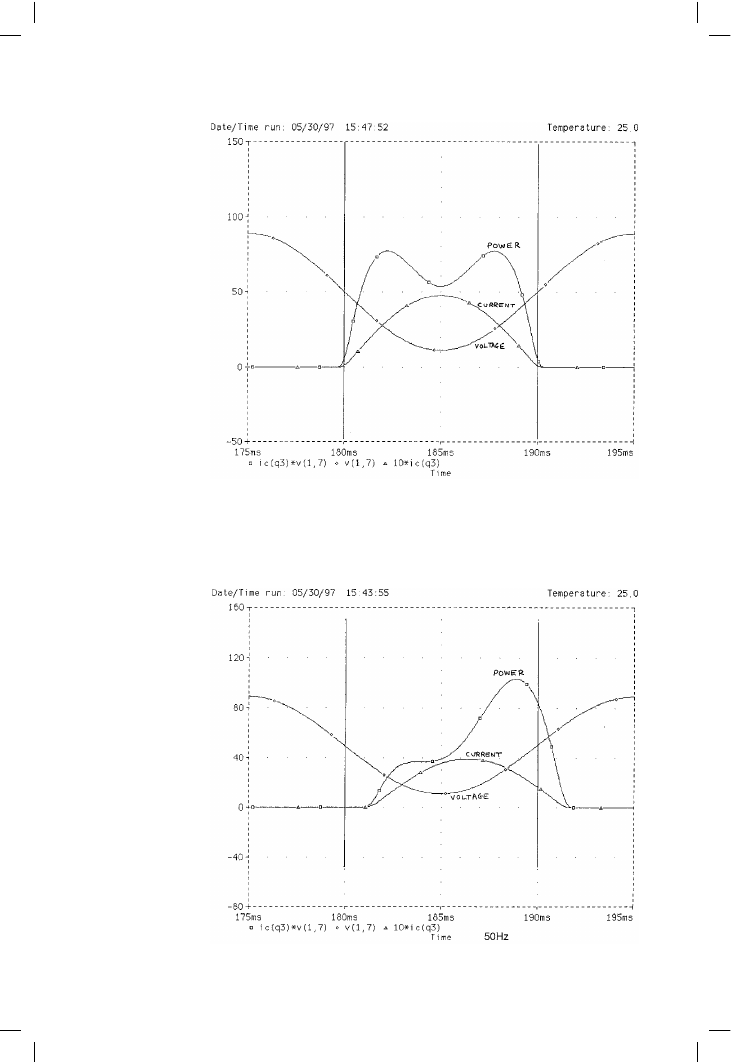
Compensation, slew-rate, and stability
215
Figure 7.31
Instantaneous Vce, Ic,
and Pdiss in an output
transistor driving 8 ! to
40 V peak at 50 Hz,
from +/–50 V rails.
Device dissipation
peaks twice at 77
watts in each half-cycle
Figure 7.32
As Figure 7.31, but
driving 50 Hz into the
single-speaker load. At
this frequency the load
is partly inductive so
current lags voltage
and the instantaneous
power curve is
asymmetrical, peaking
higher at 110 watts
towards the end of the
half-cycle
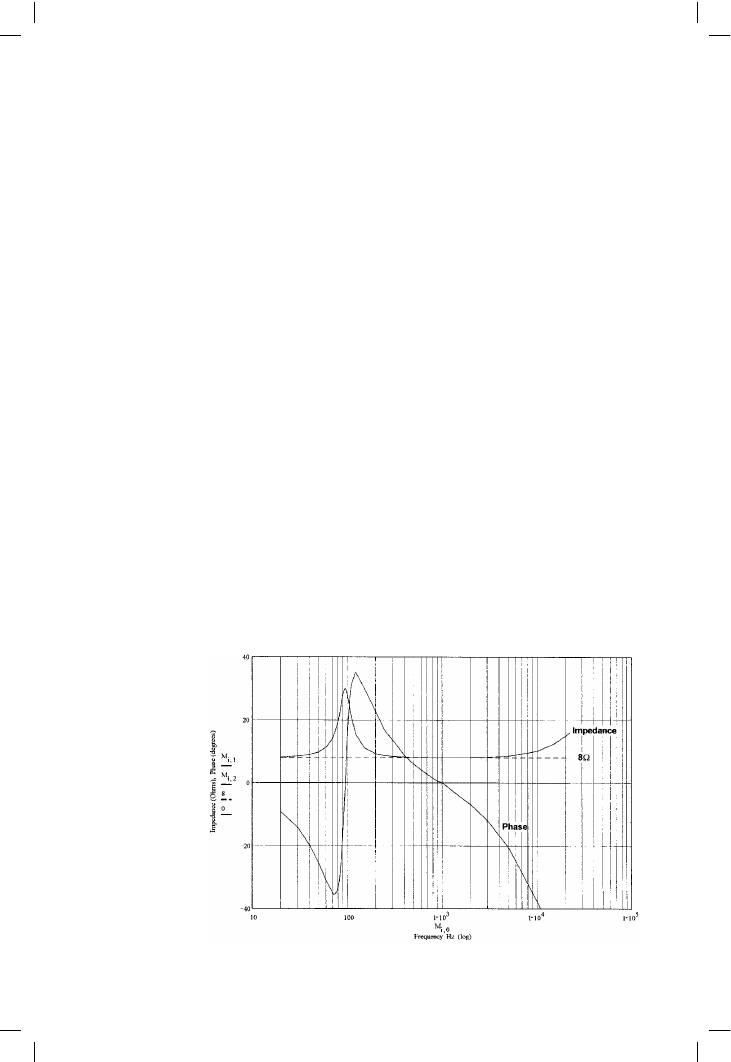
Audio Power Amplifier Design Handbook
impedance is equivalent at 50 Hz only to 8.5 ! in series with 10.8 mH.
Trying to drive this replacement load at any other frequency, or with a non-
sine waveform, would give completely wrong results. Not every writer on
this topic appears to appreciate this.
Similarly, if the single-speaker load is driven at 200 Hz, on the other side of
the resonance peak, the impedance is a combination of resistive and
capacitative at 8.4 – 3.4 j! and the current leads the voltage. This gives
much the same result as Figure 7.32, except that the peak power now
occurs in the first part of the half-cycle. The equivalent load at 200 Hz only
is 10.8 ! in parallel with 35 µF.
When designing output stages, there are four electrical quantities to
accommodate within the output device ratings; peak current, average
current, peak power and average power. (Junction temperatures must of
course also be considered at some point.) The critical quantities for
semiconductor safety in amplifiers are usually the peak instantaneous
values; for heatsink design average power is what counts, while for the
power supply average current is the significant quantity.
To determine the effect of real speaker loads on device stress I simulated an
EF output stage driving a single-speaker load with a 40 V peak sinewave,
powered from +/–50 V rails. The load was as Figure 7.26 except for a
reduction in the voicecoil inductance to 0.1 mH; the resulting impedance
curve is shown in Figure 7.33. Transient simulations over many cycles were
done for 42 spot frequencies from 20 Hz to 20 kHz, and the peak and
average quantities recorded and plotted. Many cycles must be simulated as
the bass resonance in the impedance model takes time to reach steady state
when a sinewave is abruptly applied; not everyone writing on this topic
appears to have appreciated this point.
216
Figure 7.33
Impedance curve of
the single-speaker
model. The dotted
line is 8 ! resistive
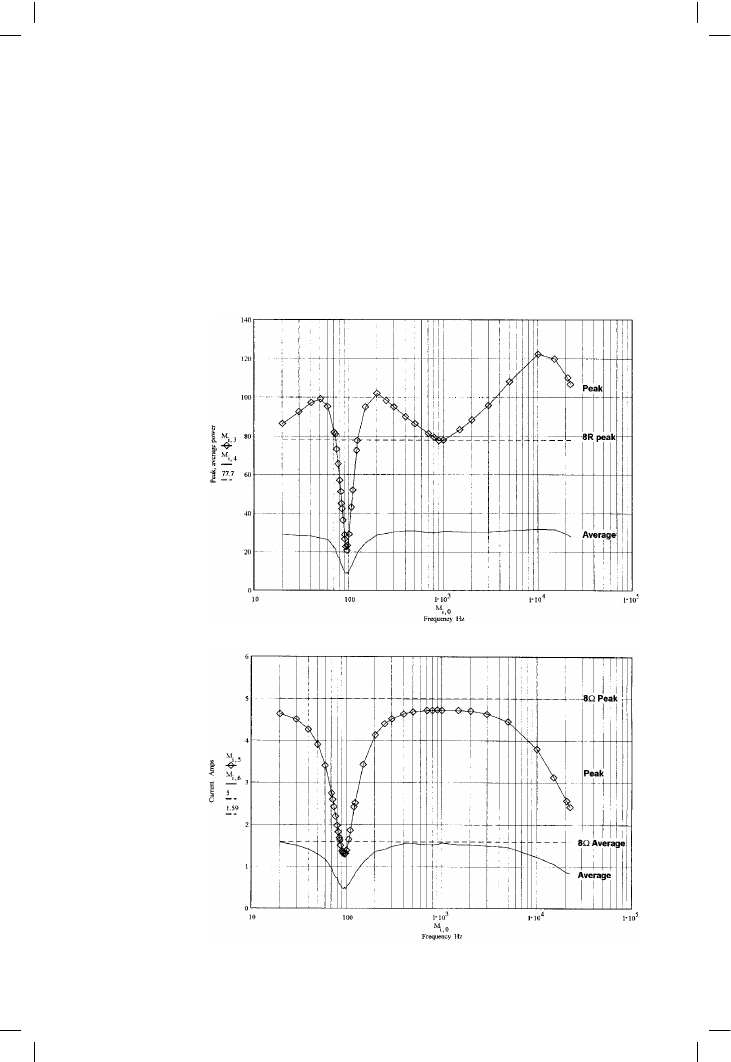
Compensation, slew-rate, and stability
Steady sinewave excitation was used as a practical approach to simulation
and testing, and does not claim to be a good approximation to music or
speech. Arbitrary non-cyclic transients could be investigated by the same
method, but the number of waveform possibilities is infinite. It would also
be necessary to be careful about the initial conditions.
Figures 7.33, 7.34 and 7.35 are the distilled results of a very large number
of simulations. Figure 7.34 shows that the gentle foothills of the impedance
peak at bass resonance actually increase the peak instantaneous power
stress on the output devices by 30%, despite the reduced current drawn.
217
Figure 7.34
Peak and average
output device power
dissipation driving
the single-unit
speaker impedance
as Figure 7.33. The
dotted line is peak
power for 8 !
resistive
Figure 7.35
Peak and average
output device current
driving the single-unit
speaker impedance.
Dotted lines are peak
and average current
into 8 !
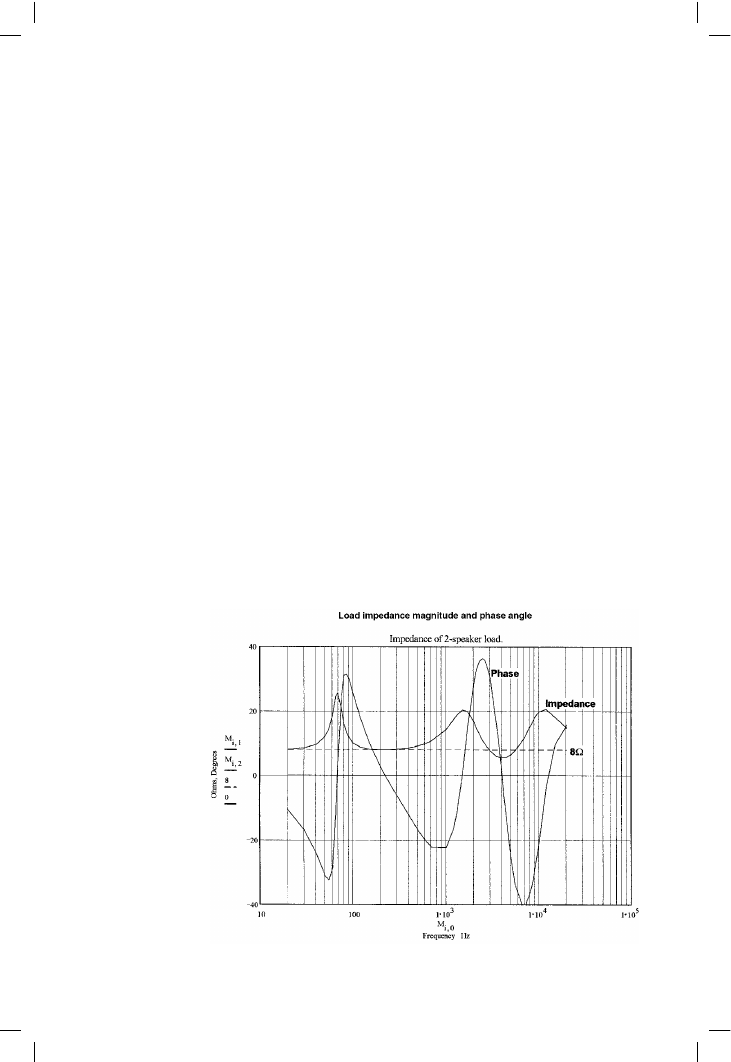
Audio Power Amplifier Design Handbook
The most dangerous regions for the amplifier are the sides of a resonance
hump where the phase shift is the greatest. Peak dissipation only falls below
that for an 8 ! resistor (shown dotted) around the actual resonance peak,
where it drops quickly to a quarter of the resistive case.
Likewise, the increase in impedance at the HF end of the spectrum, where
voicecoil inductance is significant, causes a more serious rise in peak
dissipation to 50% more than the resistive case. The conclusion is that for peak
power, the phase angle is far more important than the impedance magnitude.
The effects on the average power dissipation, and on the peak and average
device current in Figure 7.35, are more benign. With this type of load
network, all three quantities are reduced when the speaker impedance
increases, the voltage/current phase shifts having no effect on the current.
Two-way speaker loads
The impedance plot for the simulated two-way speaker load of Figure 7.29
is shown in Figure 7.36 at 59 spot frequencies. The curve is more complex
and shows a dip below the nominal impedance as well as peaks above; this
is typical of multi-speaker designs. An impedance dip causes the maximum
output device stress as it combines increased current demand with phase
shifts that increase peak instantaneous dissipation.
In Figure 7.37 the impedance rise at bass resonance again causes increased
peak power dissipation due to phase shifts; the other three quantities are
reduced. In the HF region there is an impedance dip at 6 kHz which nearly
218
Figure 7.36
Impedance curve of
model of the two-unit
speaker model in
Figure 7.30. Dotted
line is 8 ! resistive
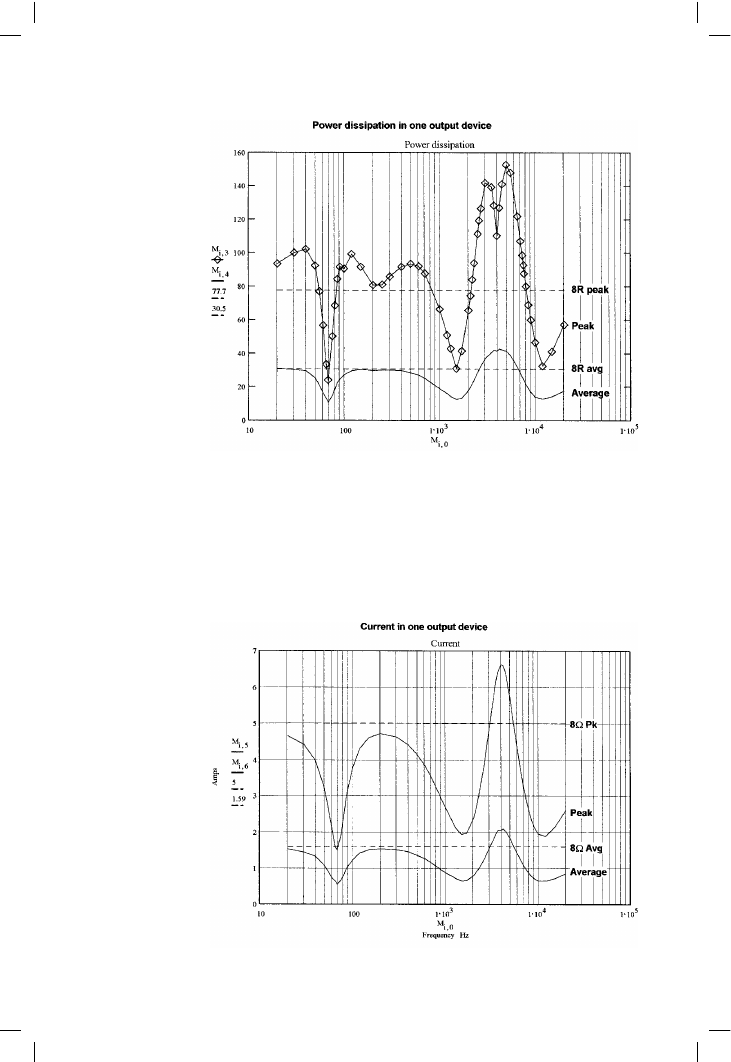
Compensation, slew-rate, and stability
doubles peak power dissipation on its lower slopes, the effect being greater
because both phase-shift and increased current demand are acting. The
actual bottom of the dip sharply reduces peak power where the phase angle
passes through zero, giving the notch effect at the top of the peak.
Average power (Figure 7.37) and peak and average current (Figure 7.38) are
all increased by the impedance dip, but to a more modest extent. Peak
219
Figure 7.37
Peak and average
output device power
dissipation driving the
two-way speaker
model. Dotted lines are
peak and average for
8 !
Figure 7.38
Peak and average
output device current
driving two-way
speaker impedance as
Figure 7.13. Dotted
lines are peak and
average for 8 !